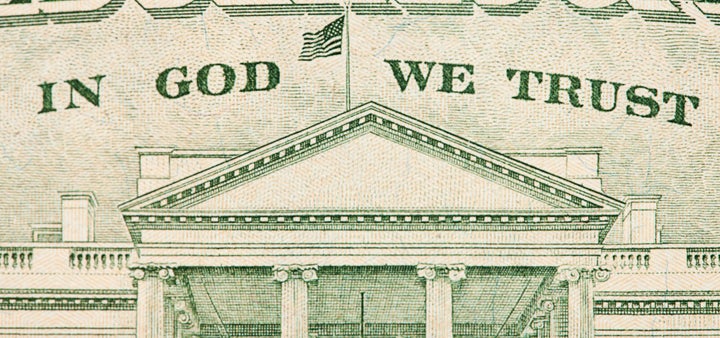
“We hold these truths to be self-evident, that all men are created equal, that they are endowed by their Creator with certain unalienable Rights, that among these are Life, Liberty and the pursuit of Happiness.”1 These are the famous words of Thomas Jefferson, one of our esteemed founding fathers. Despite these words proclaiming all men free, Jefferson was a lifelong slave-owner. An exhibit at his plantation Monticello, aptly named Slavery at Jefferson’s Monticello: Paradox of Liberty, detailed the lives of six slave families that lived there.2 It is important to make it apparent at exhibits related to the revolutionary era, exhibits like Monticello and Independence Mall, that the majority of the founding fathers owned slaves despite their own rebellious fight for freedom.(img source: http://americanhistory.si.edu/sites/default/files/exhibitions/jeff-slavery_b.jpg)
If visitors to these parks don’t have their beliefs about the American past challenged, they will leave with an unbalanced view of the men that shaped our country. Many Americans treat the founding fathers as infallible gods who passed down the stone tablets of the Declaration of Independence and the Constitution. Look no farther than the Apotheosis of Washington in the US capitol building, with its absurd rendition of Washington looking down on us from the heavens, as an example of how Americans view the founding fathers. These beliefs about the founding fathers are dangerous, because they feed into the myths of American exceptionalism and moral decay. Excerpts like this one from a National Review article by Dennis Prager about American moral decay,show us what happens when these myths are not combated effectively enough. Historical facts showing a more nuanced story about our founders are somehow an attack on the “beacon of freedom to mankind.”(img source: https://upload.wikimedia.org/wikipedia/commons/9/97/USA-US_Capitol3.JPG)
To the extent that American history is taught, beginning in high school and often earlier, American history is presented as the history of an immoral nation characterized by slavery, racism, colonialism, imperialism, economic exploitation, and militarism — not of a country that, more than any other, has been the beacon of freedom to mankind, and the country that has spent more treasure and spilled more blood to liberate other peoples than any other nation.3
Any responsible exhibit about the revolutionary period should also discuss the moral failings of our ancestors, if for no other reason then to show us how far we have come and that they were also mere mortals. As Jill Ogline argues in her piece, Creating Dissonance for the Visitor: The Heart of the Liberty Bell Controversy
It is quite another for a site synonymous with democracy and liberty to acknowledge explicitly the fundamental contradiction at the root of the American Revolution. Yet the admirable and dishonorable in American history are inter-twined—the past is an integrated reality. If slavery is engaged only at Civil War parks and plantation sites, not only is the broad reach of the peculiar institution underestimated, but a highly complex past is artificially divided into neat and mutually exclusive boxes. A historical perspective that denies the interconnection of issues and experiences provides poor preparation for life in a complex and contradictory present.4
Exhibits like Monticello and Independence Mall, and the complex stories they tell us about our own past are crucial to educating Americans, and preparing them for a ‘complex and contradictory present.’ These are the type of exhibits that the Federal Government should strive to create.
Notes
1. US Declaration of Independence
2.”Slavery at Jeffersons Monticello: Paradox of Liberty.” National Museum of American History. October 18, 2012. Accessed February 08, 2018. http://americanhistory.si.edu/exhibitions/slavery-at-monticello
3.Prager, Dennis. “Americas Accelerating Decay.” National Review. April 07, 2015. Accessed February 08, 2018. http://www.nationalreview.com/article/416543/americas-accelerating-decay-dennis-prager
4.Jill Ogline, “‘Creating Dissonance for the Visitor’: The Heart of the Liberty Bell Controversy.” The Public Historian 26.3 (Summer 2004), 55.






 both the good and bad histories of the Liberty Bell. The Grand Canyon represents wonder, freedom, and the adventurous spirit of the United States. Often called “The Great Unknown”, the Grand Canyon was a literal blank spot on the map until Joseph Christmas Ives sailed up the Colorado River in search of a trade route to the West. The mapping and “discovery” of the canyon is an example of the adventurous spirit of Americans and the beauty of exploration.
both the good and bad histories of the Liberty Bell. The Grand Canyon represents wonder, freedom, and the adventurous spirit of the United States. Often called “The Great Unknown”, the Grand Canyon was a literal blank spot on the map until Joseph Christmas Ives sailed up the Colorado River in search of a trade route to the West. The mapping and “discovery” of the canyon is an example of the adventurous spirit of Americans and the beauty of exploration.

 According to author Jill Ogline, the reason the Liberty Bell has become one of America’s most important and well recognized icons is because it is “a tangible “piece of history” electrified by a surrounding web of legend” (Ogline, 52). A much larger icon that could be described in a similar fashion is Ellis Island, the checkpoint for immigration into the land of the American dream from 1892- 1954. As visitors walk the halls of this isolated landmark, they are taken back to a time where people from all around the world believed that America, particularly New York, was a place where the streets were lined with gold and and the job opportunities were endless. This site continues to be a mecca that Americans are willing to travel to see because “the desire for an emotional connection with the past is a prime motivator in drawing visitors to historic sites”.
According to author Jill Ogline, the reason the Liberty Bell has become one of America’s most important and well recognized icons is because it is “a tangible “piece of history” electrified by a surrounding web of legend” (Ogline, 52). A much larger icon that could be described in a similar fashion is Ellis Island, the checkpoint for immigration into the land of the American dream from 1892- 1954. As visitors walk the halls of this isolated landmark, they are taken back to a time where people from all around the world believed that America, particularly New York, was a place where the streets were lined with gold and and the job opportunities were endless. This site continues to be a mecca that Americans are willing to travel to see because “the desire for an emotional connection with the past is a prime motivator in drawing visitors to historic sites”. oms and buildings where the sick and disabled were left behind for “treatment” and “rehabilitation” are not only off limits, but they have been neglected to the point of significant decay, essentially erasing that part of the story.
oms and buildings where the sick and disabled were left behind for “treatment” and “rehabilitation” are not only off limits, but they have been neglected to the point of significant decay, essentially erasing that part of the story.